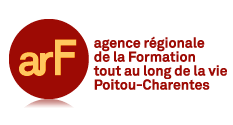Faculty retention proves a major challenge for universities
 Troy, N.Y. – Attracting and retaining the world's brightest students is on the mind of every university official. But a new, unprecedented study in the journal Science suggests leaders in higher education face an understated, even more pressing challenge: the retention of professors.
Troy, N.Y. – Attracting and retaining the world's brightest students is on the mind of every university official. But a new, unprecedented study in the journal Science suggests leaders in higher education face an understated, even more pressing challenge: the retention of professors."This means if you hire 100 assistant professors tomorrow, in 11 years only 50 of them will still be at your school," said Kaminski, professor in the Department of Mechanical, Aerospace, and Nuclear Engineering (MANE) at Rensselaer. "This leakage rate is huge, and should be a big red flag to everyone in higher education. The problem is particularly acute for research universities, where recruitment is expensive and competitive startup packages for new faculty members can be upward of $1 million."
See a video of Kaminski talking about the study at: http://www.youtube.com/.
Findings of the study will be published tomorrow by the journal Science in the paper "Survival Analysis of Faculty Retention in Science and Engineering by Gender." Co-author of the paper is Cheryl Geisler, dean of the faculty of art, communication and technology at Simon Fraser University. The study was funded by the National Science Foundation ADVANCE Program.
Kaminski and Geisler tracked the professional progress of 2,966 individual assistant professors hired since 1990 in the fields of science and engineering at 14 universities in the United States—including Rensselaer and many Ivy League schools. With the help of student researchers, Kaminski and Geisler made digital archives of publicly available university catalogs and communications to follow the careers of these assistant professors. The research team noted when the assistant professors were promoted to associate professor, promoted to full professor, or departed the university. Discrepancies and missing data were sought out online or—as a last resort—with phone calls to the actual professors or their academic departments. While time intensive, this methodology allowed for the collection of richer, more accurate data than previous faculty retention studies, Kaminski said.
The researchers found men and women faculty are retained at about the same overall rate, except in mathematics, where men stay for a median of 7.3 years and women for 4.45 years—the difference of which is statistically significant, Kaminski said. The study did not investigate the specific reasons why the tracked faculty members departed their positions.
"On the whole, men and women faculty are being retained at the same rate. This is great news and an important step toward the goal of fostering gender diversity in science and engineering programs across the country. Something is working well," Kaminski said. "In the case of mathematics, we're not quite sure what's going on, but we're convinced it merits a closer look and further study."
The overall trend of faculty retention, however, is worrying, Kaminski said. The median time a faculty member stays at a university is 10.9 years, which effectively means the school has to replace half its faculty every 11 years. The recruiting process is time and cost intensive, and startup costs for new engineering or science professors can range from $110,000 to nearly $1.5 million. Additionally, assistant professors generally teach fewer courses per year, as they're expected to spend the bulk of their time writing proposals, securing grants, and launching their research program, Kaminski said. This means new faculty members are usually more expensive to employ for their first few years until they start attracting research funding.
"We think this study could be an important reference point to help obviate many practical and financial reasons for why all universities should arguably be spending more time, energy, and resources on retaining younger faculty," Kaminski said.
Overall, at the 14 universities represented in the study, about 27 percent of faculty members hired into science, engineering, and mathematics programs are women. This percentage is on the rise, but is unlikely to reach 50 percent before 2050, Kaminski said. Even after one half of all faculty members being hired are women, it will likely take at least another 40 years before the actual population of science, engineering, and mathematics professors is 50 percent women. Kaminski leads the successful NSF-funded RAMP-UP Program at Rensselaer, which seeks to foster a university culture and climate that is supportive of all faculty members.
"I think a balanced, representative university faculty is very important for our students. We have a shortage in this country of people who choose to study science and engineering. To re-fill that pipeline, we need to look at the entire population. Women are recruited from high schools into science, engineering, and mathematics programs at a lower rate than men. To help fix this problem, we need a faculty population that looks almost identical to the population of our country. The same is true for recruiting more students from underrepresented minorities into science and engineering. If we want the United States to retain its technological leadership into future generations, we need to make sure the fields of science and engineering are accessible to everyone," Kaminski said.
Source: Rensselaer Polytechnic Institute.









/https%3A%2F%2Fprofilepics.canalblog.com%2Fprofilepics%2F1%2F0%2F1076071.jpg)